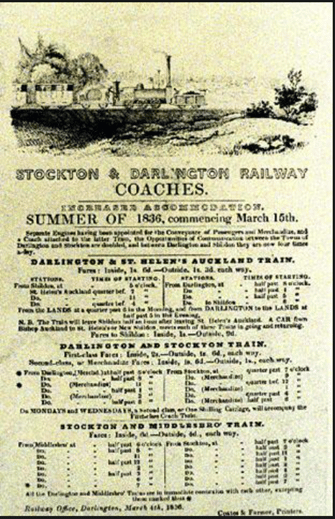The world’s first publicly-owned, steam powered passenger railway opened to great fanfare between Stockton and Darlington in a ‘red letter’ day in world transport history.

Despite the important role the Stockton & Darlington Railway occupies in world transport history, it soon became apparent that the shipment of coal from Stockton was impractical owing to large vessels struggling to navigate the River Tees upstream. At a Committee meeting held in October 1827, the Stockton & Darlington Railway Company decided to extend their railway with a branch line to new shipping facilities downstream closer to the sea. Timothy Hackworth, the engineer on the Stockton & Darlington Railway, was awarded the contract to plan the new Port Darlington coal staiths, built on the site now occupied by AV Dawson’s Port of Middlesbrough facility. However, the suspension bridge built over the Tees at Stockton proved wobbly and struggled to bear the weight of the heavy coal trains heading to Middlesbrough, so had to be replaced 14 years later.

Did you know?
By 1829, Middlesbrough had been bought by local businessman and rail pioneer, Joseph Pease to build a new coal port, named Port Darlington, and a town in which the port workers could live. Pease, with four other Quakers, purchased the Middlesbrough estate of 520 acres of salt marsh for £30,000. Pease famously predicted ‘Yarm was, Stockton is, Middlesbrough will be.'.
Did you know?
The ‘navvies’ and joiners responsible for laying the rails of the new line and building the staiths lived in mud huts and makeshift housing due to the lack of available accommodation around the site of the new industrial development. The first house of the new town – designed as a grid plan - was built by George Chapman on West Street in April 1830.